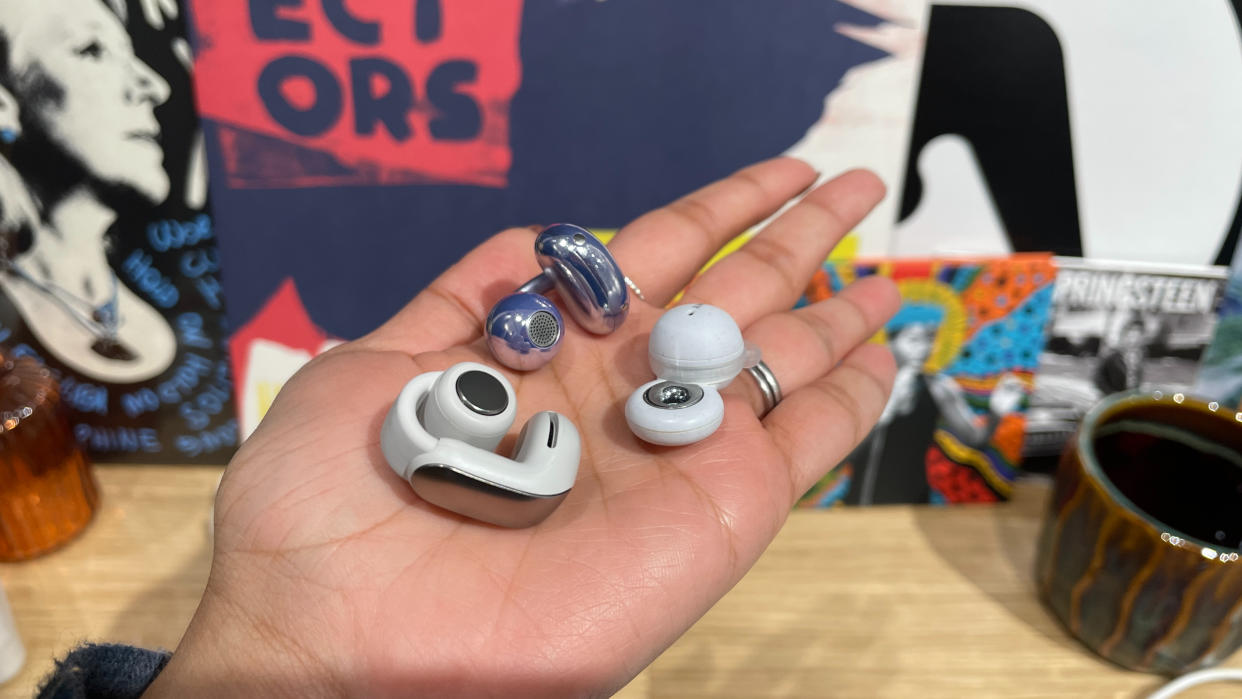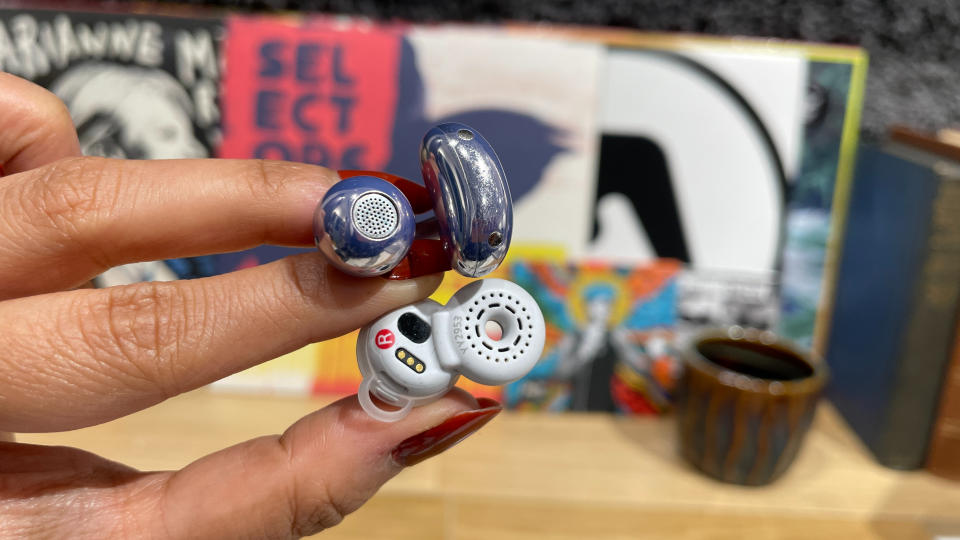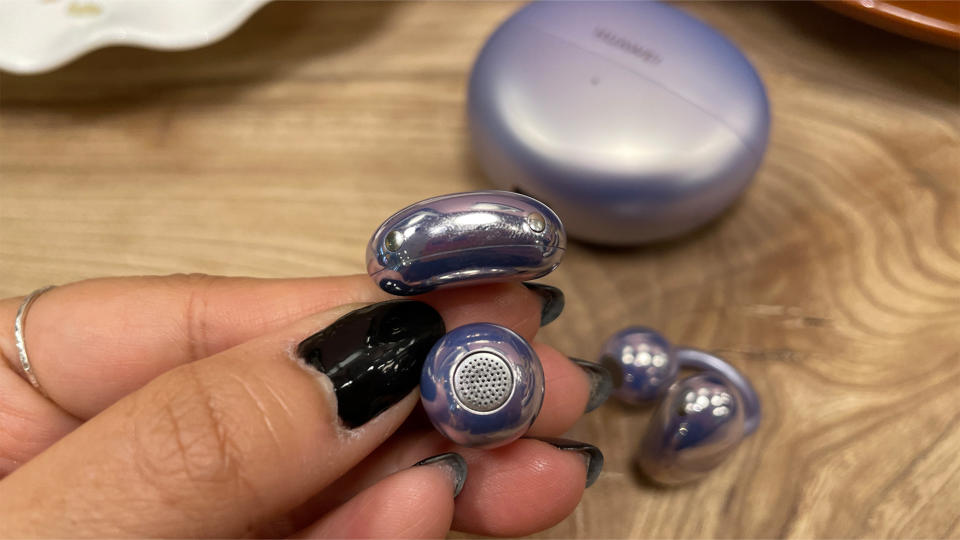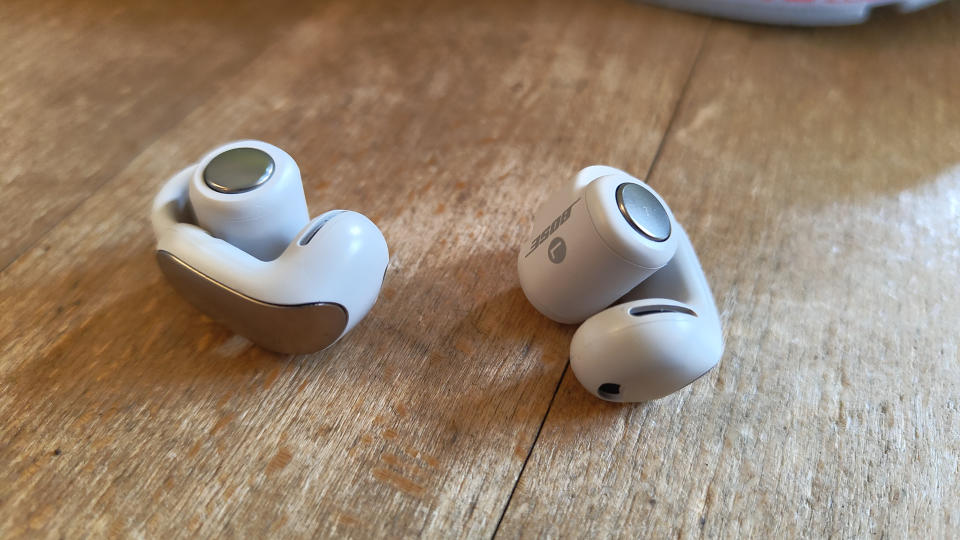What are open earbuds? How do the headphones work and are they worth it?

If you’ve been keeping an eye on headphone trends over the past year, you’ll have noticed something afoot in the world of in-ear headphones.
Everyone is familiar with the traditional in-ear design, right? Where a driver in each earbud fires music through a tube, directly into your ear canal and down to your eardrum.
Well, in recent months a handful of manufacturers have revisited the drawing board and launched a new style of earphone that’s being referred to as an ‘open earbud’. Like a lot of modern in-ears, they tend to be wireless, but with some key differences regarding design and fit. We’ll cover all of them in this article together with the pros and cons to help you decide if open earbuds are actually worth considering.
How do open earbuds work?

As previously mentioned, the in-ear headphones we’ve come to know and love tend to place a driver in an enclosure which fires sound through a funnel and into your ear canal. Normally, attached to the end of the funnel is a silicone or memory foam ‘tip’ designed to create a seal, thus isolating the wearer from outside noise and stopping sound from leaking out.
Open earbuds on the other hand don’t burrow into your ear canal. They have neither a funnel nor a surround – they’re not designed to create a seal. Instead, they sit in proximity of the opening to your ear canal.
We’ve tested three pairs of open earbuds in recent months, and the driver design has varied for each one. For example, Sony uses a ring driver for its WF-L900 Linkbuds that sits just behind your tragus. The Huawei FreeClip’s ‘acoustic ball’ sits in your concha, as does the tip of the Bose Ultra Open Earbuds.
The Sonys probably sit closest to your ear canal without diving inside and they’re wedged in place with the aid of a small wing tip attached to the main body of the earbud. Without any surrounds to create a seal or tips to help secure them in place, Bose and Huawei have both opted for a clip design where a band wraps around the back of your ear under tension to the other half of the clip and helps to clamp the earbuds in place.
The Huawei and Bose have deliberately been designed to look more like a fashion accessory than a standard pair of headphones. Bose, for example, has been quick to take advantage of this and partner with fashion brand Kith for a limited run of Ultra Open Earbuds.
What are the advantages of open earbuds?

The most obvious advantage of open earbuds is that they’re an alternative for those who don’t like the fit of normal in-ear headphones. Some might find the fact they don’t burrow in very appealing and there’s a good chance these users will find open earbuds more comfortable and relaxing, especially over long periods.
There are health benefits too – it’s a broadly held opinion that traditional earbuds aren’t particularly hygienic because they can push ear wax and other debris into your ear canal. Open earbuds don’t have this problem, and the lack of a seal can also reduce conditions that might promote bacterial growth and ear infections.
Health experts have linked listening to loud noise for long periods to hearing loss and in-ear headphones are generally believed to contribute to this more than over-ears. Because open earbuds don’t block the entrance to your ear canal and don’t fire music directly at your eardrum, this could help reduce the possibility of hearing damage.
Open earbuds also reduce what is often referred to as the ‘stethoscope’ effect. This is the amplified noise generated when you catch an earbud sitting in your ear canal - similar to the cable noise you hear transmitted through wired in-ear headphones.
If you want to hear more of your surroundings, e.g. if you’re out running and need to be aware of what’s happening around you, then open earbuds are likely to help. Of course, it’s all relative to the volume you’re listening at – the louder you play your music, the less of an advantage the design becomes.
What are the disadvantages of open earbuds?

Conversely, the fact open earbuds can let in more noise could also be seen as a disadvantage, e.g. if you’re using them in a noisy gym and want to cut out the grunting and other people's terrible Spotify playlists. In this case, you might prefer a pair of noise-cancelling earbuds. ANC earbuds are also likely to offer a transparency mode so you at least have the option of letting ambient noise through if required.
The design of open earbuds means that positioning matters more than with normal in-ears. Because they sit outside your ear canal, dispersion needs to be controlled so you don’t lose any sonic information on its way to your eardrum. If the buds use a clip design, for example, they need to sit securely and not move around when you do.
How do they sound? Open earbuds vs normal earbuds

In our experience, open earbuds generally tend to sound, erm, more open and airy than normal in-ears. Music boasts a greater sense of spaciousness because the seal has been removed. The fact they’re not wedged in your ears also allows them to sound a little less intense, which some users might prefer.
The flipside is that open earbuds struggle to match traditional in-ears for clarity, punch and dynamism. In-ears sit closer to your eardrum and can drive the space between the tip and eardrum harder, giving sound extra solidity and reinforcement, especially in the lower frequencies. Open designs have to work a lot harder because they are positioned further away from your ear canal. To their credit, though, the Bose Ultra Open Earbuds did manage to deliver surprisingly solid weighty bass during testing.
Are open earbuds worth it? If you don't get along with the fit of normal wireless earbuds, then we can see the appeal. At the time of writing, we've found they can't quite match the very best wireless earbuds sonically, but Bose and Sony do have models that sound good enough to warrant a closer look.
How do open earbuds differ from bone-conduction headphones?

Open earbuds are a very different proposition to bone-conduction headphones. While the former still channel audio in the direction of the opening of your ear canal and into your inner ear, the latter transmit audio signals as vibrations through your upper cheek or jaw bone. They are transmitted directly to your cochlea via your temporal bone, bypassing your eardrum completely.
The design allows you to be much more aware of your surroundings, as there’s nothing positioned near the entrance to your ear. But, because your eardrum doesn’t get involved in processing any audio signals, there are layers of information that will be missed and sound quality, in our experience at least, is extremely compromised.
Are open earbuds here to stay?
Rumour has it Sony is already working on a second-generation pair of LinkBuds which might even include noise-cancelling – which would be a first. And, we were mightily impressed by the Bose Ultra Open Earbuds, given they were a first attempt, and they show that there could be some real potential there to push on with improvements for a second-generation model if Bose carries on down this path.
As with all new product genres, it really depends on whether the design takes off and if there’s enough demand from the public. While the design going completely mainstream might seem a little way off at the moment, we wouldn’t be surprised to see a handful of other manufacturers launch products in this category.
MORE:
Our pick of the best wireless earbuds you can buy
Are these the Sony LinkBuds 2 wireless earbuds?
Bone conduction headphones: everything you need to know
How active noise-cancelling headphones work: the technology behind ANC
